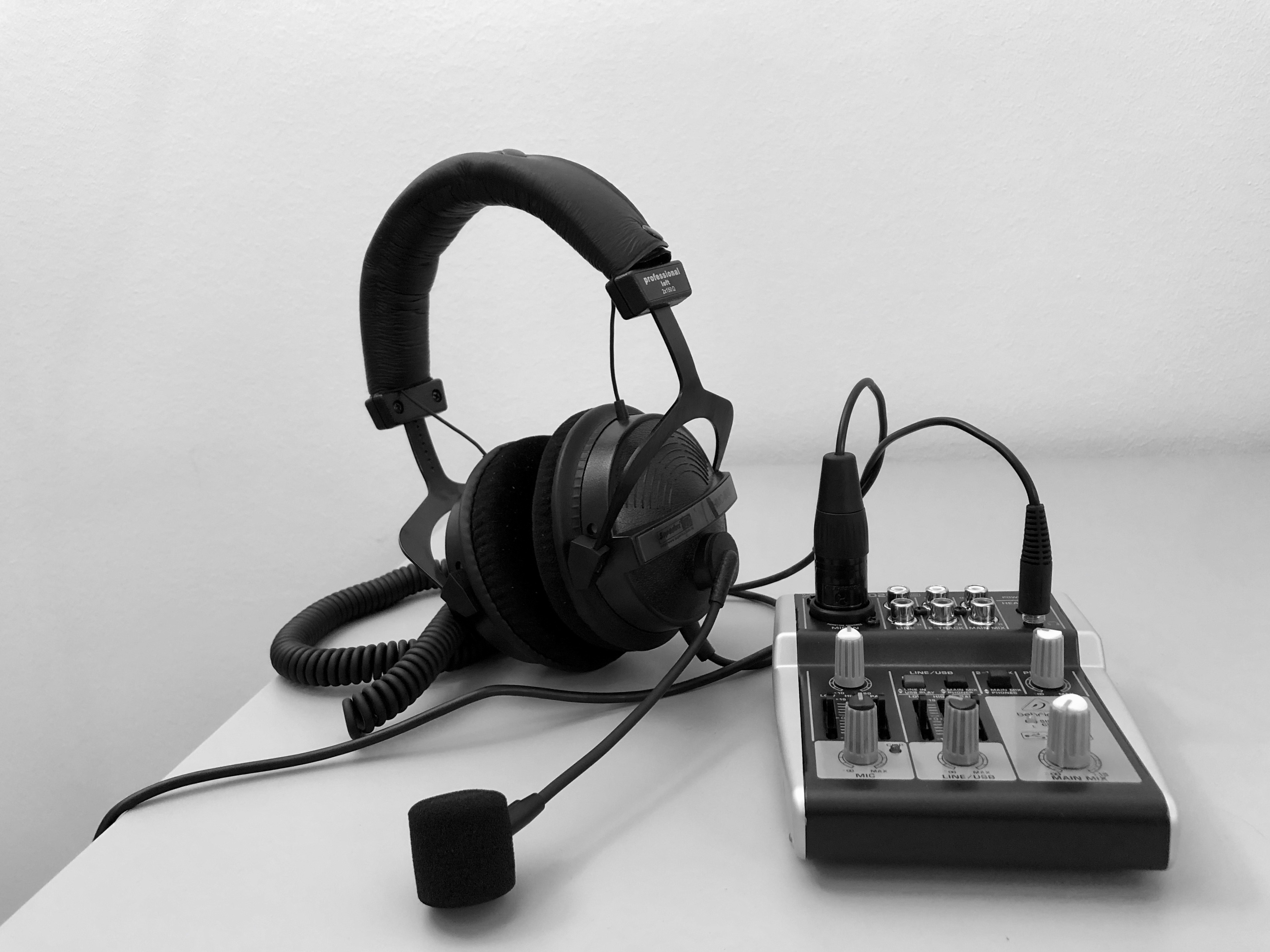In this post, I will summarize a series of posts¹ on the german podcasting community Sendegate. The original author is Ralf Stockmann, he came up with this setup. For images and links to products head over to Sendegate.
I will explain how and why to use a cheap headset and USB audio interface to record podcasts. The total cost of this setup will be less than 100 € per person to record. This makes it a very affordable beginner level podcasting setup. It is also an option to record a guest on a show without adding too much cost. Since this setup includes a USB audio interface you can easily upgrade to a better microphone and headphones later.
Components
Headset with microphone: Superlux HMC 660 X
The Superlux HMC 660 X headset is a cheap knock-off of a much more expensive Beyerdynamic headset. It uses a very similar design. One downside of the cheap price: the audio quality of the headphones part is not comparable to any Byerdynamic headphones. Owning a pair of DT 770 Pros I can compare them. The Superlux headphones sound very dull and flat compared to the Beyerdynamics. But for simple input monitoring, they are fine. Also, the standard earpads are not as comfortable but you can upgrade those for under 10 €.
The microphone part is a bit tricky. Ralf discovered that the microphone does not work well with more than 15V of phantom power. Phantom power is usually provided by a microphone pre-amp. Most USB audio interface with XLR connectors provide phantom power with 48V. This makes the Superlux headset sound horrible. That is why Ralf recommends an audio interface with only 15V of phantom power. There are also two alternatives:
- using adapters to use the mic-in plug your computer
- soldering some resistors into a spare XLR cable to make the headset mic usable with 48V phantom power.
USB audio interface: Behringer XENYX 302 USB
As mentioned in the previous section, this is a USB audio interface that uses 15V phantom power. Using this interface will make you able to hear your voice while recording. Also, it makes the microphone sound much better than using direct input.
Optional: non-USB audio adapter solution
You need two adapters to use this headset with direct input. The kind of adapter cables depend on your device. Macs, iPhones and iPads use the TRRS standard for headsets. So you need a cable that has the combined input/output TRRS jack on one side and two standard 3,5 mm sockets on the other side. Additionally, you need an adapter from XLR socket to 3,5 mm audio jack.
Costs
- Headset 39 €
- Earpads: 8,90 €
- USB audio interface: 42 €
- optional XLR adapter: 8,90 €
- optional TRRS adapter: ~10 €
XENYX Settings
These settings describe the hardware knob positions:
- GAIN and MIC: 12 o’clock
- LINE/USB and PHONES: 10 o’clock
- MAIN MIX: off / 7 o’clock (not needed in this setup)
- LINE/USB switches FROM and TO enabled
- 2-TRACK switch disabled
- all eq-faders (LOW, HIGH, PAN, BAL) in neutral / middle position
On your computer select the XENYX interface as system input and output. For whatever reason, macOS displays the Behringer interface as “USB Audio CODEC”.
Audio Problems
Before recording with this setup do some test recordings. Check if everything sounds fine. Also check the noise-floor for unwanted interference sounds like ground loop humming. Generally, this should not happen since the XENYX 302 USB is USB powered.
Happy podcasting! 🎧🎙
¹ Links to Sendegate posts:
- Sendegate: Profi-Klang für alle! Das HMC660 Headset richtig einsetzen
- Weihnachts-Special: das HMC660X direkt anschließen
